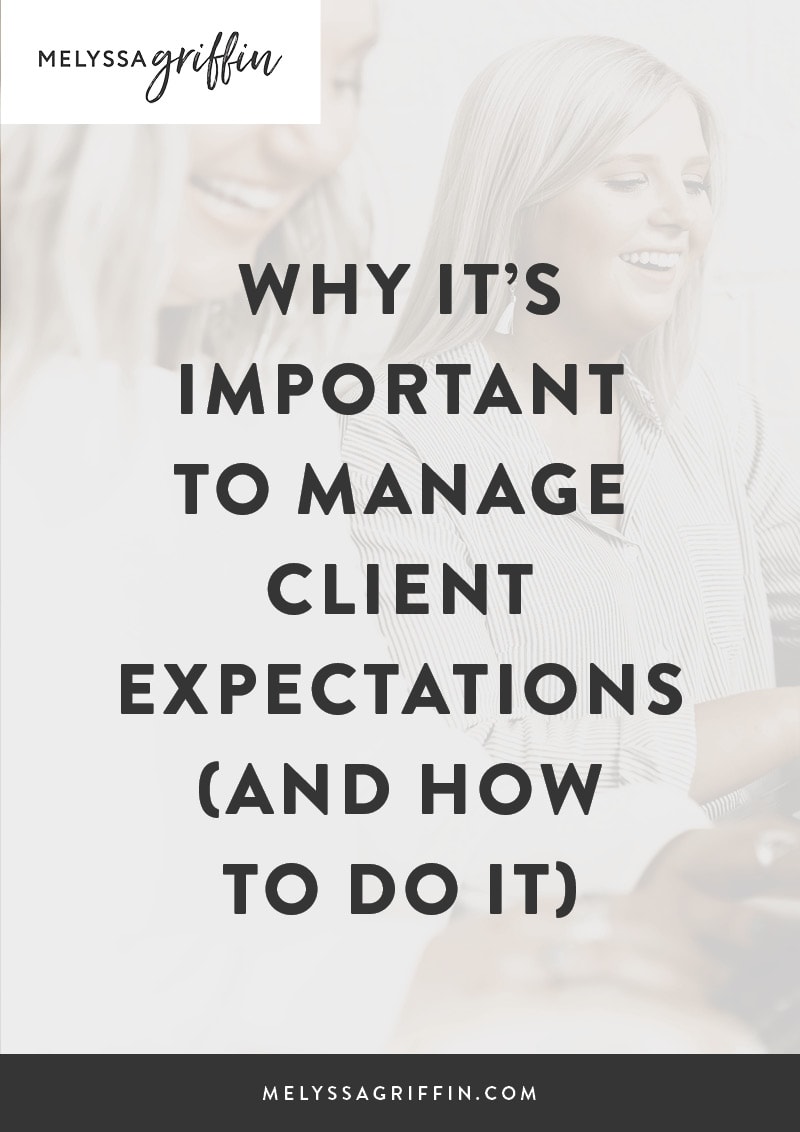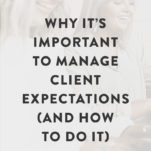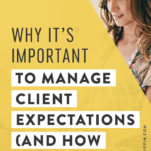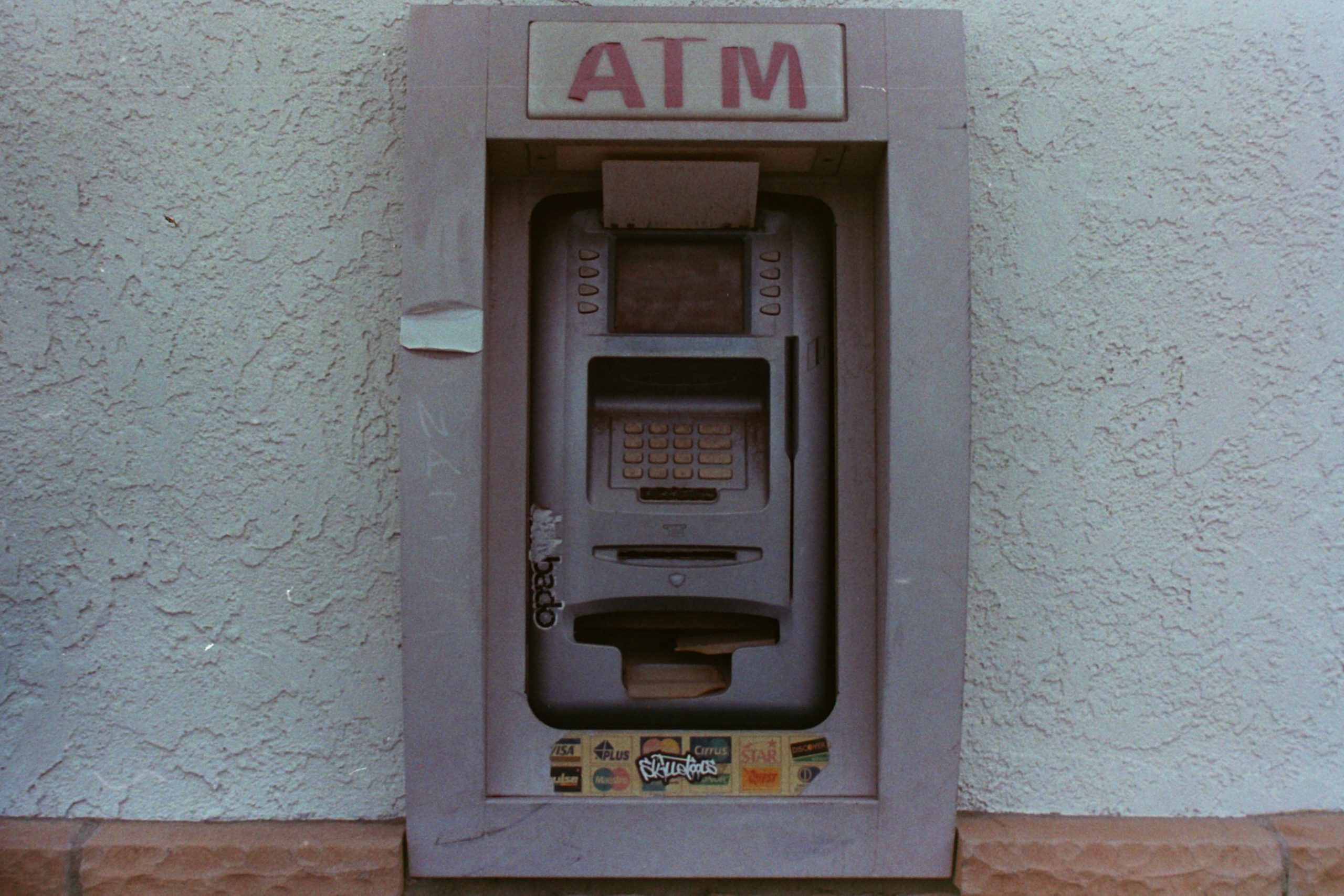My husband has a motto he likes to live by, one that I think most people would find fairly depressing. He says, “The key to happiness is low expectations.” Kind of a bummer, right? It’s not exactly a phrase you’d want cross-stitched on a pillow. But still, even though it’s a pretty dismal saying, I have to admit, it actually makes a lot of sense. Think about it: so much of life’s disappointments come from our totally out-of-whack expectations. The movie that doesn’t live up to the hype, the 5-star dinner that ends in food poisoning, the $100 haircut that looks nothing like the picture you brought in. When expectations are not met, it can quickly lead to disappointment.

And the same is true in business. When a customer is dissatisfied with a service, it’s usually because they were expecting something far different from what they ended up getting. But the tough part about expectations is that most people are not so great at communicating them. In client relationships, this can quickly cause conflict. If you run your own business, perhaps you’ve had the experience of dealing with a client who seemed to expect that you be able to read their mind. I mean, how can you please such people?
As a business owner, the reality is that all of your clients, even the super chill ones, come in with preexisting assumptions. That’s just how human beings are, which is why it is essential to be deliberate about learning how to manage expectations. By shaping your client’s understanding of the service you provide, you are better able to ensure that they have a positive experience.
Still, it’s hard enough to manage our own expectations. How in the world can we figure out how to manage someone else’s? Well, if you want to master this skill, here are a few key ways to get you there:
Be honest
From the very beginning, it’s important to make the Cans and Cants of what you have to offer abundantly clear. For example, if a client asks you to design something in a day that would ordinarily take you a week, admit that timing might be an issue for you. While it may seem counterintuitive to express your limitations, it’s far better than leading clients to believe that you’re a superhero capable of any-and-everything. When it comes to setting expectations, always under-promise and over-deliver.
Communicate like your job depends on it (because, by the way, it does)
The most important service you are providing for a client is accessibility. Part of what they are paying for is the peace of mind that they can reach out to you with questions or concerns without having to wait weeks for an answer. But let’s admit it: when life gets bananas, communication is the first thing that tends falls through the cracks. That being said, make speedy email responses and quickly returned phone calls your first priority. Consistent communication builds trust with clients and prevents them from feeling out-of-the-loop.

Listen
You are the designer/the writer/the coder/the branding specialist, etc. Whatever it is that you do, it’s likely you’re somewhat of an expert. While that may be, it’s important to make sure you really understand what your client wants before you start inserting yourself into their creative vision. Prepare a series of questions, or a survey, before strategizing on a project. Inquire about budget, timeline, brand messaging, likes, dislikes – anything that might impact the way your client will ultimately feel about the finished product.
Process
With your client, outline the project and agree on a timeline. Even better, create phases within your timeline (ex – Phase 1: Brainstorming, Phase 2: Development, Phase 3: First draft, Phase 4: Edits, etc.). This keeps both you and your client accountable for the process, and it gives you reference points that you can check off along the way. Plus, it’s super fun to be able to say, “We are now entering Phase Three.”
Provide reports
This one wins you tons of gold stars. As you are working on a project, it’s always important to keep your client apprised of what exactly it is that you are working on. Even if they don’t solicit a detailed report from you, it’s still helpful to send a quick email with bullet points of what you have been doing for them. For one, this assures them that your time (and, effectively, their money) is not going to waste. Second, it allows them to feel like they are part of the process. And third, it relieves you from any future liability. Should confusion arise down the road, you will always be able to politely refer to your daily/weekly report. See how prepared you are!
Be a human
If you really want your client to feel taken care of throughout the process, just put yourself in their shoes. How would you want to be treated? What are the things you appreciate when collaborating with someone? What are the things you don’t appreciate? Have you ever experienced a situation in which a professional did not meet your expectations? Allow your previous experiences to help you anticipate the needs and desires of your client. In the end, it’s all about treating others the way you would like to be treated. So be nice, be patient, be honest, be awesome. Basically, just be a decent human being, and get out there and do some amazing work.














